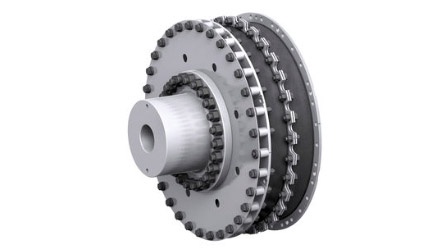Types of gear coupling, manufacturers, suppliers & exporters
In order to understand different types of gear couplings, we need to first understand what exactly is a gear coupling. Let us first learn what is a coupling. A coupling can be termed as a power transmitter in simplest terms. They act as a connecting component between two shafts. The difference in the coupling collection is actually decided by the complexity of connectivity, the power that needs to be transferred, and the operation field. Gear couplings are one such type of couplings which can relay extreme high torques.
Where are Gear Couplings used?
Gear couplings are used in high torque high power applications. This is because they can tolerate more torque than any other universal joint. However, another difference between the gear coupling and a universal joint is that universal joints produce lesser vibration. In contrast, gear couplings are made of two hubs with internal teeth, external teeth and a single piece or two-piece sleeve.
What are the different types of gear couplings?
Different types of gear couplings are important in their own aspect in different machines. Depending upon their utilization, there are different types of gear couplings available at your nearest gear coupling manufacturer in India:
- Full gear couplings: used in all the major industrial applications
- Half gear half rigid couplings: Made of a rigid and a flexible half
- Rigid couplings: Mainly used in places where an exact alignment between two connected shafts is required.
- Floating shaft assemblies: Used in long distance shaft connections.
- Slide couplings: Used where thermal shaft expansion has to be considered in addition to any axial movement.
- Shear pin couplings: These are suitable where applications get clogged or are overrun with dangerously high loads.
- Disconnect couplings: similar to shear pin couplings and can be used for both high speed and medium applications.
- Flanged gear couplings: These involve a perpendicular flange surrounding short sleeves.
- Continuous sleeve gear couplings: Made in both copper and nylon, these couplings have shaft ends that are joined and abutted together and further enclosed in a sleeve.
Thus, as understood, gear couplings are mechanical parts that transmit torque between non collinear axes. They are made of two flexible joints attached to a shaft each. There is a third axis linking this joint that is called as spindle. Almost all the joints are made of external or internal gears. In order to help the angular displacement between the gears, the outer ring and the gear sides are crowned. If you are looking for a specific coupling type to serve your purpose, it is best to contact a gear coupling manufacturers in India for the same.


No comments yet